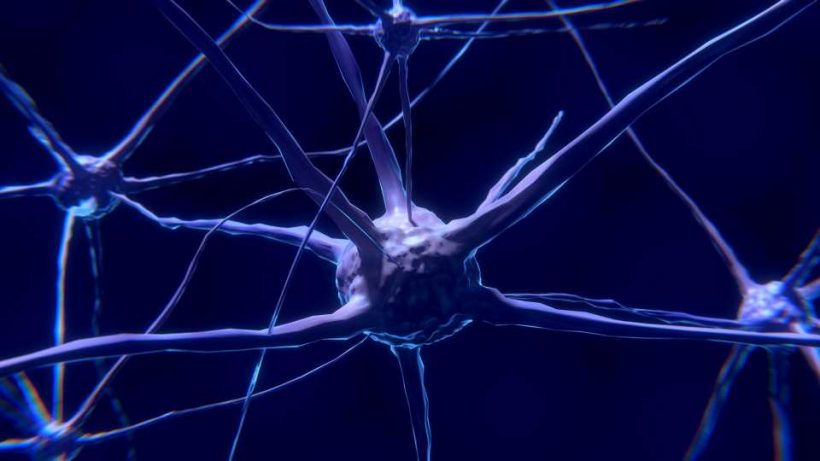
An international team of investigators has discovered that an inorganic polyphosphate released by nerve cells known as astrocytes in people with amyotrophic lateral sclerosis (ALS) and frontotemporal dementia (FTD) contributes to the motor neuron death that is the signature of these diseases. The research, by Brigitte van Zundert, Ph.D., adjunct professor of neurology at UMass Chan and professor at the Universidad Andres Bello in Chile; Robert H. Brown Jr., DPhil, MD, professor of neurology, and colleagues appears this week in Neuron.
“We are encouraged by these early results,” said Dr. Brown, the Leo P. and Theresa M. LaChance Chair in Medical Research. “These findings provide an entirely new perspective on ALS pathogenesis, raising exciting hypotheses and possibilities both for disease biomarkers and for therapeutic targets.”
ALS and FTD are characterized by the degeneration of motor neurons in the spinal cord and frontal lobes, but the causes of this neurotoxicity have remained elusive. And while great progress has been made in identifying genetic mutations that cause these neurodegenerative disorders, the vast majority of cases have no identifiable genetic mutation. How genetic changes affect neurons, and the possible impact of toxic factors, has also remained elusive.
Previous research has shown that the astrocytes—the glial cells in the brain and spinal cord—may release one or more toxic factors that contribute to motor neuron death. The Neuron study provides evidence that the offending neurotoxic factor is a common inorganic polyphosphate, which was found to be released by both mouse and human astrocytes in cells with an array of ALS/FTD-linked mutations (including SOD1, TARDBP and C9ORF72).
The toxic factor, called polyP, is a ubiquitous negatively charged inorganic biopolymer present in the cells of all living organisms, from bacteria to mammals. These polyphosphates perform numerous functions in cells: energy storage, formation of membrane channels, gene activity control, regulation of enzymes and stress response.
“The biggest surprise from our study is that the toxic factor is not a novel or rare protein or peptide, but rather a very simple inorganic molecule that is found in every tested cell type in nature and conserved across more than 3 billion years of evolution,” said Dr. van Zundert, corresponding author on the Neuron study.
An important finding of the research is that human cerebrospinal fluid samples from familial and sporadic ALS cases revealed increased polyP concentrations.
“The study shows that exposure of spinal cord neurons to polyP reproduced the toxic effects of media from ALS astrocyte cultures, causing hyperexcitability, increased Ca2+ flow into neurons and enhanced motoneuron death,” said van Zundert.
Additionally, van Zundert, Brown and colleagues found that motor neurons can be rescued from the astrocyte toxicity by reducing levels of polyP.
“Our findings strongly encourage the view that lowering polyP levels extracellularly may be an innovative therapeutic strategy for diverse types of ALS/FTD,” said van Zundert.
As a postdoctoral fellow in Brown’s laboratory in 2008, van Zundert discovered that increased electrical excitability of motor neurons is an early, critical feature in mouse models of ALS. van Zundert began to consider polyPs as a candidate cause of hyperexcitability in 2014, when it was reported that this molecule can act as a glial transmitter that mediates communications between astrocytes and neurons.
ALS and FTD are devastating, incurable diseases. ALS is a progressive neurodegenerative disorder that involves the loss of motor neurons that control voluntary muscles. Roughly 10 percent of ALS is familial—inherited from a person’s parents—and is caused by a genetic mutation in a patient’s DNA. The remaining 90 percent of cases are classified as sporadic and occur in cases with no family history of disease. An estimated 6,000 people in the United States are diagnosed with ALS each year.
Source: Read Full Article
